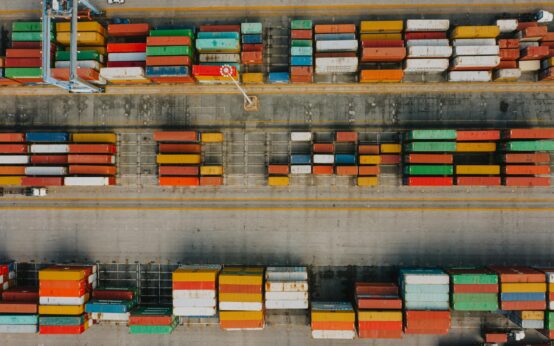The Future of Food: Vertical Farming and Lab-Grown Meat
Imagine a world where fresh produce is readily available regardless of climate or location, and where meat doesn’t require the raising and slaughtering of animals. This isn’t science fiction – it’s the potential future of food, driven by innovations like vertical farming and lab-grown meat.
A Growing Need for Sustainable Solutions
Our current food system faces immense challenges. A growing global population, coupled with the pressures of climate change, resource depletion, and ethical concerns surrounding animal welfare, demands innovative solutions. We need to find ways to produce more food with less impact on the planet.
Vertical Farming: Reaching New Heights in Agriculture
Vertical farming, the practice of growing crops in vertically stacked layers, offers a promising answer. These indoor farms often incorporate controlled environments, utilizing technologies like hydroponics, aeroponics, and aquaponics to minimize resource use. Think of it as a high-tech, climate-resistant greenhouse stacked upwards.
- Reduced Land Usage: Vertical farms require significantly less land than traditional agriculture, freeing up space for other uses and reducing urban sprawl.
- Water Conservation: By recirculating water, these systems drastically cut down on water consumption compared to conventional farming.
- Year-Round Production: Independent of weather patterns, vertical farms can produce crops continuously throughout the year.
- Minimized Transportation Costs: Locating these farms closer to urban centers reduces transportation distances, fuel consumption, and emissions.

Lab-Grown Meat: Cultivating a Kinder Cut
Also known as cellular agriculture or cultured meat, this groundbreaking technology involves growing meat directly from animal cells in a lab. This bypasses the need for raising and slaughtering animals, presenting a potentially more ethical and sustainable alternative.
- Animal Welfare: Lab-grown meat eliminates the need for factory farming, addressing concerns about animal cruelty and living conditions.
- Reduced Environmental Impact: Studies suggest that lab-grown meat could significantly reduce greenhouse gas emissions, land usage, and water consumption compared to traditional meat production.
- Food Security: Cellular agriculture has the potential to enhance food security by providing a more reliable and efficient way to produce meat.
- Public Health Benefits: Lab-grown meat could offer opportunities to control the nutritional content and reduce the risk of foodborne illnesses.
“The future of food is not just about feeding a growing population, it’s about doing so sustainably and ethically. Vertical farming and lab-grown meat hold tremendous promise for achieving this goal.” – Bruce Friedrich, Co-founder and Executive Director of The Good Food Institute.
Challenges and Opportunities
While both vertical farming and lab-grown meat offer exciting possibilities, they also face challenges. High upfront costs, energy consumption in vertical farms, and consumer acceptance of lab-grown meat are hurdles that need to be overcome.
A Symbiotic Future?
Interestingly, vertical farming and lab-grown meat could potentially complement each other. Vertical farms could provide a sustainable source of nutrients and growth factors for cultivating meat in labs, creating a closed-loop system.
Investing in the Future of Food
Research, development, and investment are crucial for scaling these technologies and making them accessible to a wider population. Governments, investors, and entrepreneurs all have a role to play in shaping this future. The choices we make today will determine how we feed ourselves tomorrow. By embracing innovation and exploring these cutting-edge technologies, we can pave the way for a more sustainable, ethical, and delicious future of food.
Embracing the Change
The food landscape is evolving, and vertical farming and lab-grown meat are at the forefront of this transformation. These technologies offer the potential to address some of the most pressing challenges facing our food system. By embracing innovation and supporting the development of these game-changing solutions, we can cultivate a future where food is not only abundant and accessible, but also sustainable and ethically produced. The future of food is in our hands – let’s make it a good one.



 Beginner’s Guide to APIs: Simply Explained (2024)
Beginner’s Guide to APIs: Simply Explained (2024)  Drones’ Impact: Transforming Modern Society
Drones’ Impact: Transforming Modern Society  Tech’s Impact on Education: A Revolution in Learning
Tech’s Impact on Education: A Revolution in Learning  LiDAR Technology: A Deep Dive into Applications and Future
LiDAR Technology: A Deep Dive into Applications and Future  E-Waste Challenges & Sustainable Tech Solutions
E-Waste Challenges & Sustainable Tech Solutions  Bioinformatics: Unraveling Life’s Mysteries with Code
Bioinformatics: Unraveling Life’s Mysteries with Code  Fractional NFTs: Unlock High-Value Asset Ownership
Fractional NFTs: Unlock High-Value Asset Ownership  Crypto Rug Pulls: What They Are & How to Avoid Them
Crypto Rug Pulls: What They Are & How to Avoid Them  Revolutionizing Supply Chains: The Impact of Blockchain
Revolutionizing Supply Chains: The Impact of Blockchain  DeFi Insurance: Your Guide to Protecting Crypto Assets
DeFi Insurance: Your Guide to Protecting Crypto Assets  NFT Standard Evolution: ERC-721 to ERC-1155 and Beyond
NFT Standard Evolution: ERC-721 to ERC-1155 and Beyond  Crypto Chart Pattern Trading: A Comprehensive Guide
Crypto Chart Pattern Trading: A Comprehensive Guide